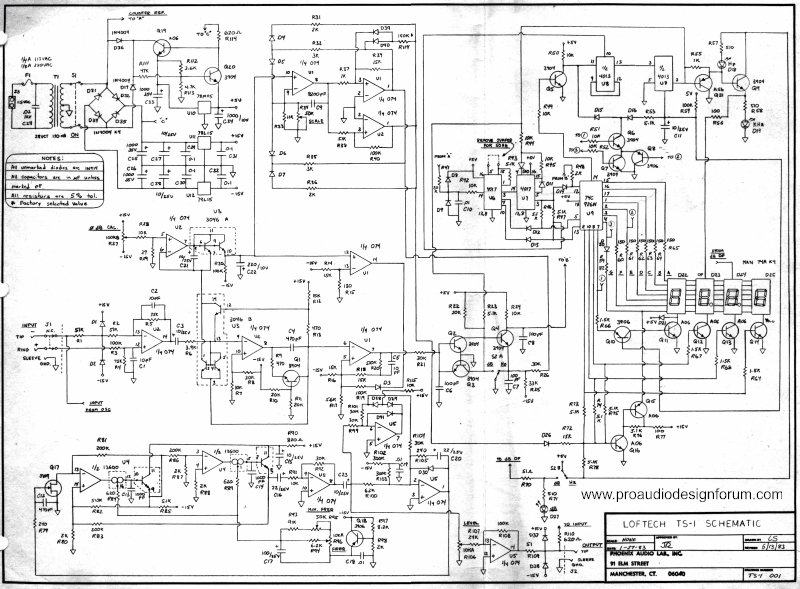pascal.verdet wrote: ↑Fri Nov 03, 2017 6:54 am
Many thanks JR.
Since dB and frequency are common input J1,
Is this the same path for the two functions, or is the difference in operation just made by the S2 switch ?
There is only one input audio path...
The frequency counter grabs the audio from the output of the rectifier op amp that is naturally amplified by the rectification process. A comparator formed by one section of op amp is gated off at low amplitude so the frequency counter does not try to count noise. As I mentioned yesterday the transistors q2,q3,q4 serve as a pulse doubler so every zero crossing is counted and 1/2 second period can impute cycles per second.
Pin 12 of 74C926 are the clock input.
the 4017 cmos dividers generate a time base by dividing down the mains frequency. Probably gated at 1/2 second rate.
First divider divides by 5 or by 6, second divider is toggled on/off to scale between Hz and kHz
What is the secret to differentiate the audio level, and the frequencies?
Secret?
What is the exact role of the three op amps (U1 10,9,8 U1 3,2,1 U2 3,2,1 )in upper middle schema, it's just for auto scale, or anything else
Pascal
Those 3 op amps are the function I described yesterday (sawtooth generator for dB counter.) The mV level log of the audio dB goes into pin 10 + input. The R to ground from - input pin 9 creates a linear current draw that charges capacitor C9 up or down for + or - dB voltage input.
The two op amps U1 and U2 pins 1,2,3 serve as comparators to quickly reset the ramp at positive or negative ramp voltage limits so it will continue to ramp. The count of number of completed ramps up or down in the 1/2 second time window represents how many dB above or below 0dB is present. 0dB present 0V to the integrator, for zero current, and zero ramps up/down in the unit time.
Since i designed this almost 35 years ago, some details are a little fuzzy,,, there was a single switch to toggle between frequency counter and dB meter, all the other stuff (like frequency counter auto ranging) was automatic.
In hindsight putting a frequency counter on the output of a sine wave generator that covered from <20 Hz to >20kHz with one knob was inviting a lot of disappointed customers trying to dial in exactly 1,000 Hz and getting a couple Hz one side or the other.

JR
PS: I still ponder how much easier it would be to make one of these using a modern (cheap) microprocessor... I have to keep telling myself don't even think about it.

Cancel the "cancel culture", do not support mob hatred.
